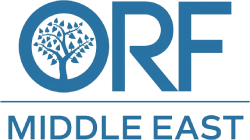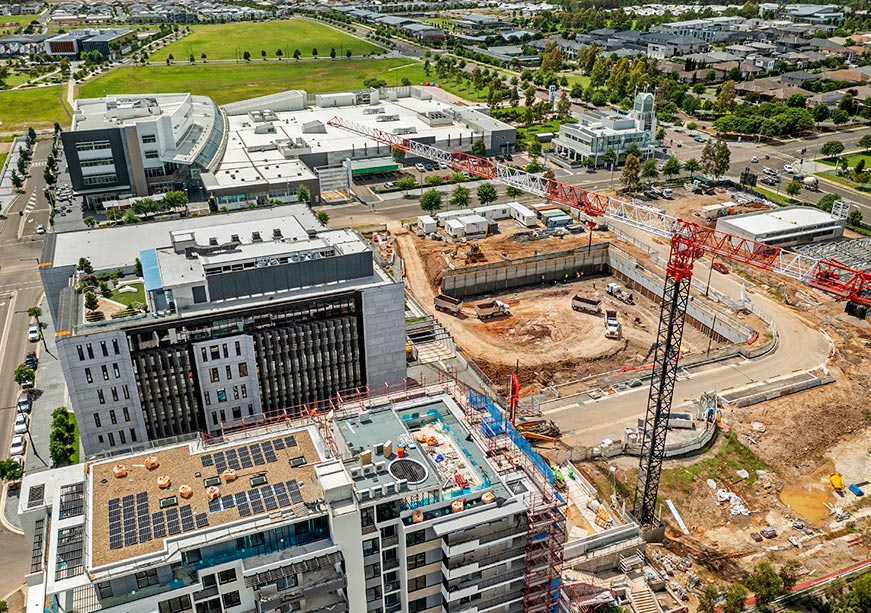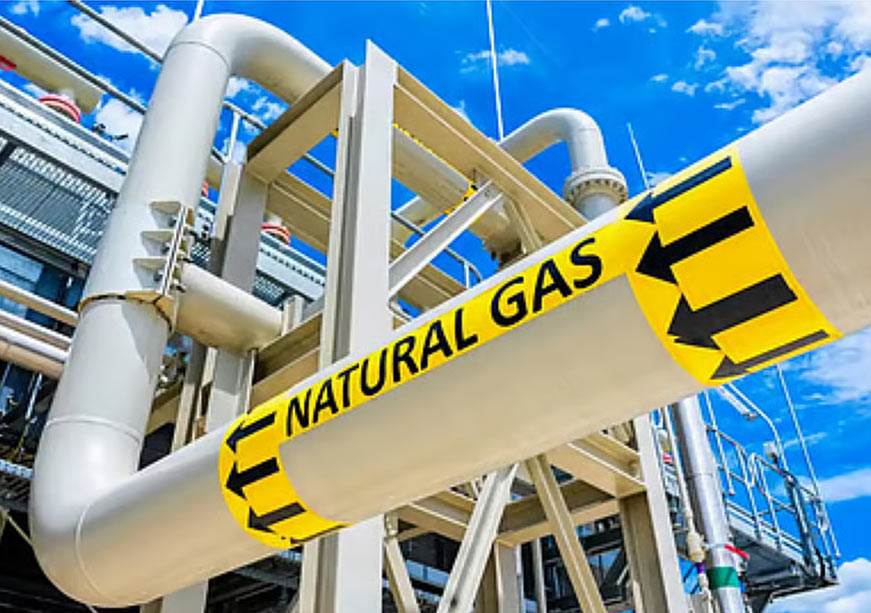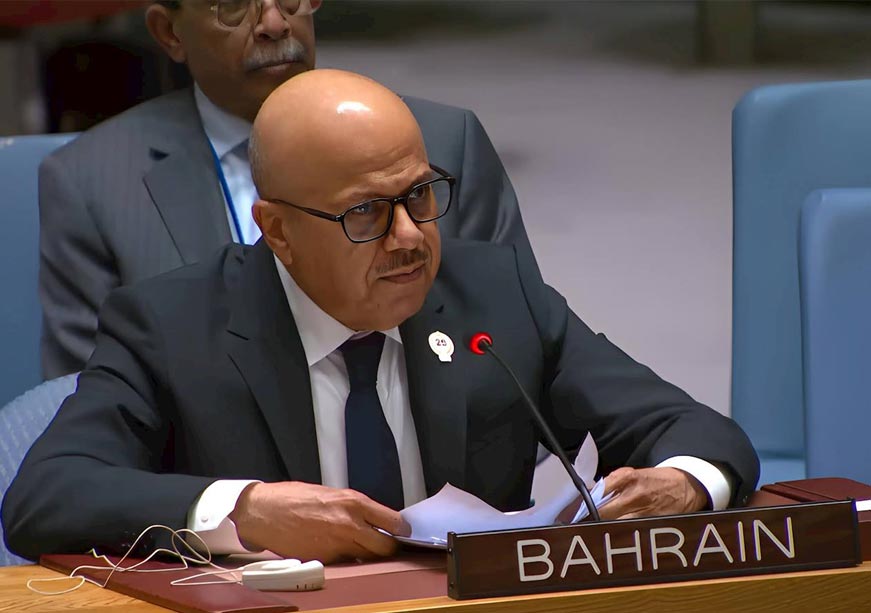As the Gulf's real estate market rapidly expands, building sustainable infrastructure is essential to securing a low-carbon, climate-resilient future for the region
As cities grow and skylines rise, the climate consequences of construction have become impossible to ignore. Globally, buildings account for roughly 39 percent of energy-related carbon emissions (about 28 percent from operational energy use and 11 percent from the materials and construction processes, i.e. embodied carbon). With the global building stock expected to double by 2050, “upfront” carbon emissions from new construction could consume a major share of our remaining carbon budget.
The World Green Building Council has outlined clear targets: a 40 percent reduction in embodied carbon by 2030 for all new buildings, and net-zero operational and embodied carbon across the entire sector by 2050. Achieving these goals demands greener building codes, deep energy retrofits, cleaner materials, and innovative design(—)alongside bold leadership and coordinated policy, especially in regions experiencing construction booms.
Building Codes as Catalysts for Change
The UAE offers a valuable case study in translating vision into practice through regulation. In 2010, Abu Dhabi launched Estidama (meaning “sustainability” in Arabic) and the Pearl Rating System, requiring all new developments to meet at least a 1 Pearl rating (2 Pearls for government-funded buildings). Unlike voluntary frameworks such as LEED or BREEAM, Estidama is embedded in law. Masdar City further raised the bar, mandating a minimum 3 Pearl rating for its buildings.
Dubai soon followed. By 2014, the Dubai Municipality’s Green Building Regulations became mandatory for all new public and private buildings. In 2016, the Al Sa’fat system introduced additional incentives for high-performing projects.
Ras Al Khaimah (RAK) joined the movement with the Barjeel Green Building Regulations in 2019, making them mandatory in 2020. Barjeel aims to cut energy and water use by around 30 percent compared to traditional buildings.
While these achievements are notable, gaps remain. As of recent years, several northern emirates had yet to adopt binding green building codes. Ensuring nationwide coverage and robust enforcement will be vital to avoid a patchwork approach and unchecked high-carbon developments.
Regional Momentum: Saudi Arabia and Beyond
Across the Gulf, sustainability is rising on national agendas. Saudi Arabia’s Green Building Code, introduced as part of a broader national code update, establishes minimum standards for sustainable construction. The Mostadam rating system promotes sustainability across communities and developments, aligning with the Kingdom’s ambitious Vision 2030 agenda.
Mega-projects such as NEOM, particularly “The Line,” aim to revolutionise urban living with a 100 percent renewable-powered, zero-carbon design, preserving 95 percent of surrounding nature. Similarly, Qatar’s Global Sustainability Assessment System (GSAS) has set a benchmark for green buildings, particularly during the 2022 FIFA World Cup.
However, the challenge remains ensuring that day-to-day construction, not just flagship projects, adheres to green standards. Enforcement across thousands of projects will determine the real impact of these policies.
Private Sector Leadership and International Standards
Regulations alone are not enough. The private sector must innovate beyond compliance. In the UAE, companies such as Aldar Properties and Masdar lead by example. Aldar has set a net-zero target for its operations by 2030 and its broader value chain by 2050, investing heavily in low-carbon technologies and renewable energy.
Masdar, Abu Dhabi’s clean energy pioneer, continues to demonstrate the viability of sustainable infrastructure. Masdar City’s buildings use around 40 percent less energy and water than their conventional counterparts, integrating passive cooling, renewable energy, and sustainable transport solutions. Beyond Masdar City, the company has invested in over 11 GW of renewable energy globally.
International frameworks such as LEED and BREEAM have further supported regional progress. Many high-profile UAE projects, from airports to hotels, pursue LEED Gold or Platinum certification, helping the country consistently rank among the top nations outside the United States for LEED-certified projects. Blending local codes with global standards fosters a sustainability culture within the regional architecture and engineering sectors.
Beyond New Construction: Retrofitting and Circular Economy
Addressing new construction alone is insufficient. Around 80 percent of the buildings that will exist in 2050 already stand today. Many of these were built before efficiency standards were common and are inherently wasteful. For example, a Dubai study found best-performing hotels consumed 58 percent less energy and 65 percent less water than the worst-performing ones of similar size.
Retrofitting offers a huge opportunity. Upgrading insulation, sealing air leaks, modernising HVAC systems, and integrating smart controls can halve a building’s energy use. Dubai’s Etihad ESCO has retrofitted numerous buildings, achieving major efficiency gains. Similar initiatives are underway in Abu Dhabi.
In parallel, embracing a circular economy in construction is critical. Today, 10-15 percent of building materials are wasted during construction, and construction and demolition waste make up about 70-75 percent of the UAE’s total solid waste. Circular strategies, including recycling concrete and steel, modular construction, and designing for disassembly can cut emissions and waste dramatically.
The UAE’s Circular Economy Policy 2021-2031 prioritises green infrastructure, emphasising renovation, better material use, and recycling targets. Companies such as Bee’ah are already advancing zero-waste-to-landfill programs, transforming construction debris into usable materials.
However, stricter enforcement of waste sorting, recycling requirements, and education of stakeholders are needed. Government incentives for low-carbon materials, recycled content mandates, and investment in recycling infrastructure could accelerate the shift to circularity.
Bridging the Gaps: Policy and Practice
Despite strong progress, gaps remain. First, green building codes must be expanded and ideally harmonised across all Gulf jurisdictions. Within the UAE, there is a need for a unified sustainability rating system that applies across all emirates, including those where green building regulations are not yet mandatory. A common national framework would help standardise requirements, streamline compliance, and make it easier for the private sector to navigate sustainability expectations.
Second, enforcement must go beyond design and construction approvals to include robust monitoring and post-occupancy evaluations. For instance, Abu Dhabi’s Estidama Pearl Operational rating remains voluntary, highlighting the importance of performance-based certifications.
Third, retrofitting policies require scaling. Financial incentives such as green loans, retrofit subsidies, or mandatory energy audits for large properties can stimulate building upgrades. Without deep retrofits, Gulf cities risk locking in high emissions.
Finally, embodied carbon remains under-regulated. While operational efficiency dominates current codes, embodied emissions from construction materials must also be addressed through life cycle assessments, material passports, and carbon reporting. Cities like London and California have already introduced embodied carbon limits. The Gulf could adopt similar measures for cement and steel-intensive sectors.
Building sustainable infrastructure in a booming real estate market is not only possible, it is imperative. The UAE and the Gulf are at a pivotal moment where today’s choices will influence generations to come.
Continuing “business as usual” risks escalating emissions, resource depletion, and climate vulnerability. In contrast, prioritising sustainability will deliver thriving and resilient cities aligned with global climate goals and enriched quality of life.
Encouraging signs are already apparent. By scaling what works and closing policy gaps, the Gulf can become a global model for sustainable urban development. The opportunity is enormous, and the urgency is real. Every new tower, community, or retrofit must be a step toward a net-zero future. The region’s governments have already signalled intent: the UAE has committed to achieving net-zero emissions by 2050, while Saudi Arabia and Bahrain have set 2060 as their target. As the Middle East builds for the future, it must build responsibly and resiliently. The choices made today will shape the legacy of tomorrow, one that can either lock in risk or lead the world in sustainable progress.
Antonios Vouloudis is the Senior Director of Sustainability and Stewardship at NYU Abu Dhabi, leading the university’s Climate Action Plan and broader environmental initiatives.












